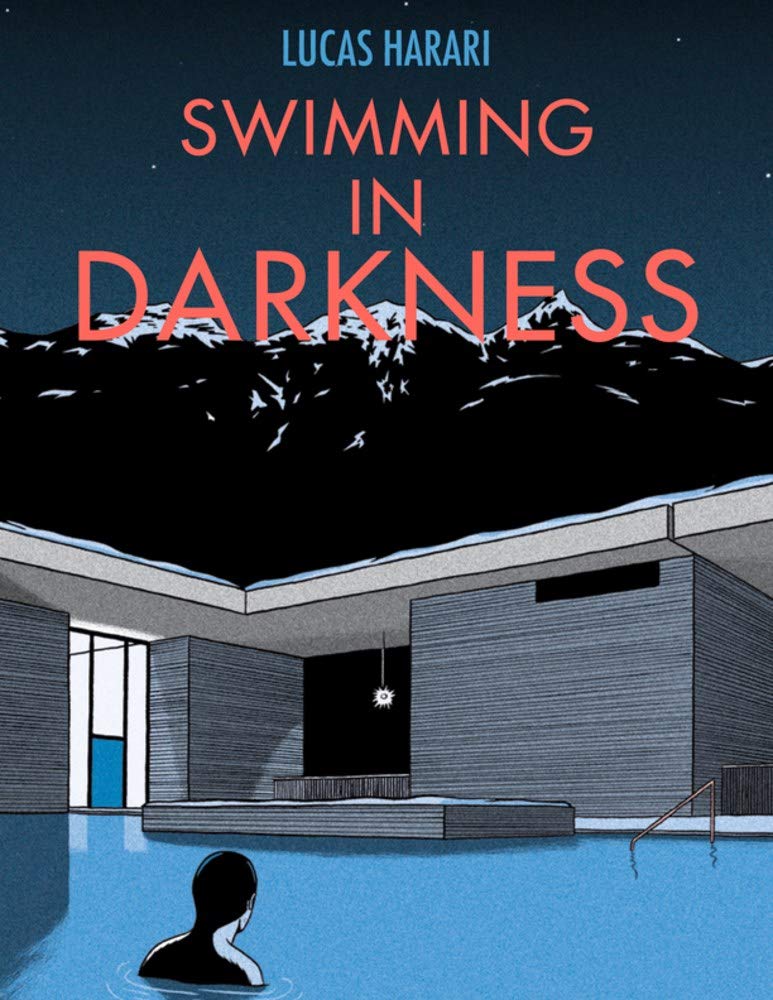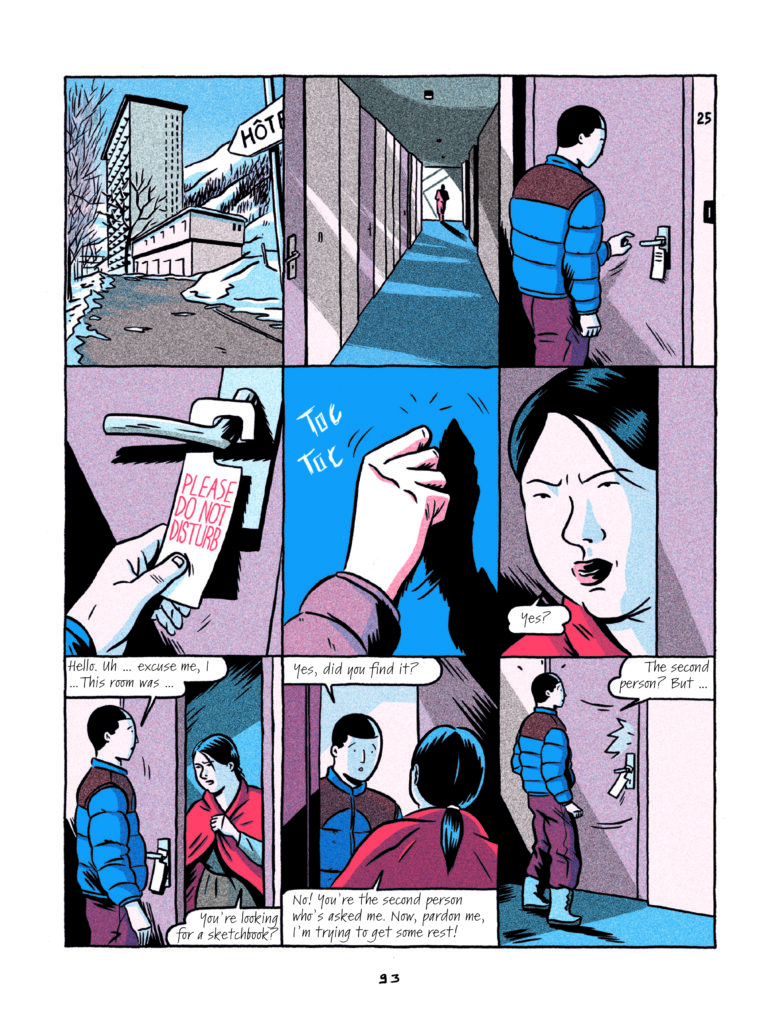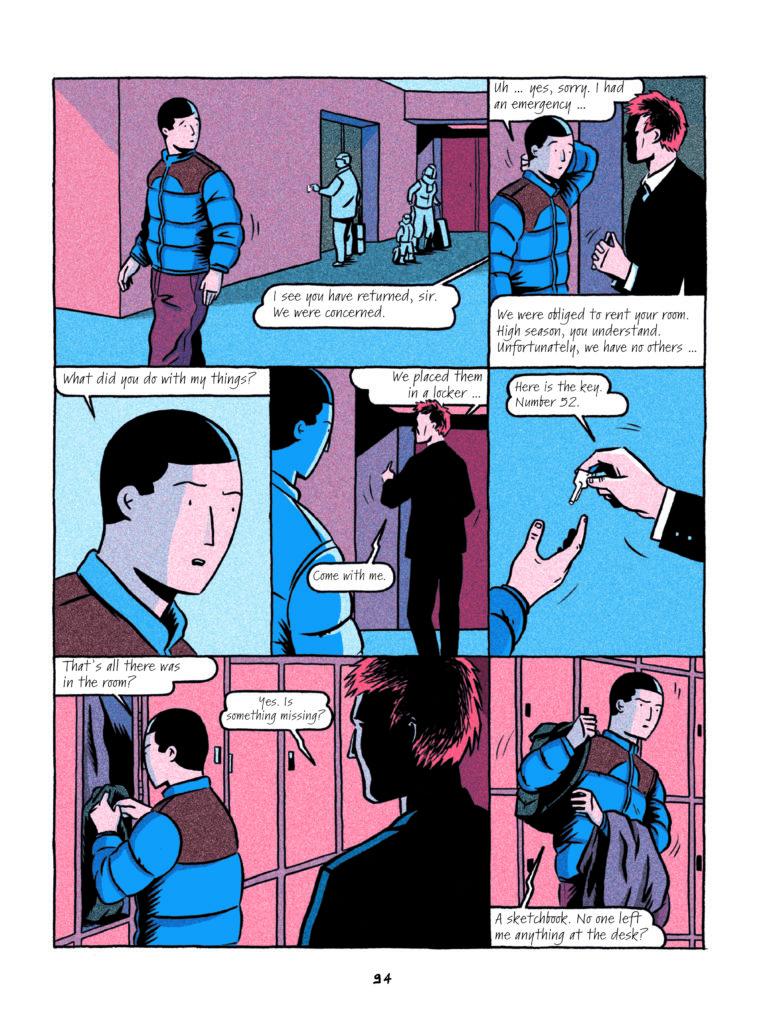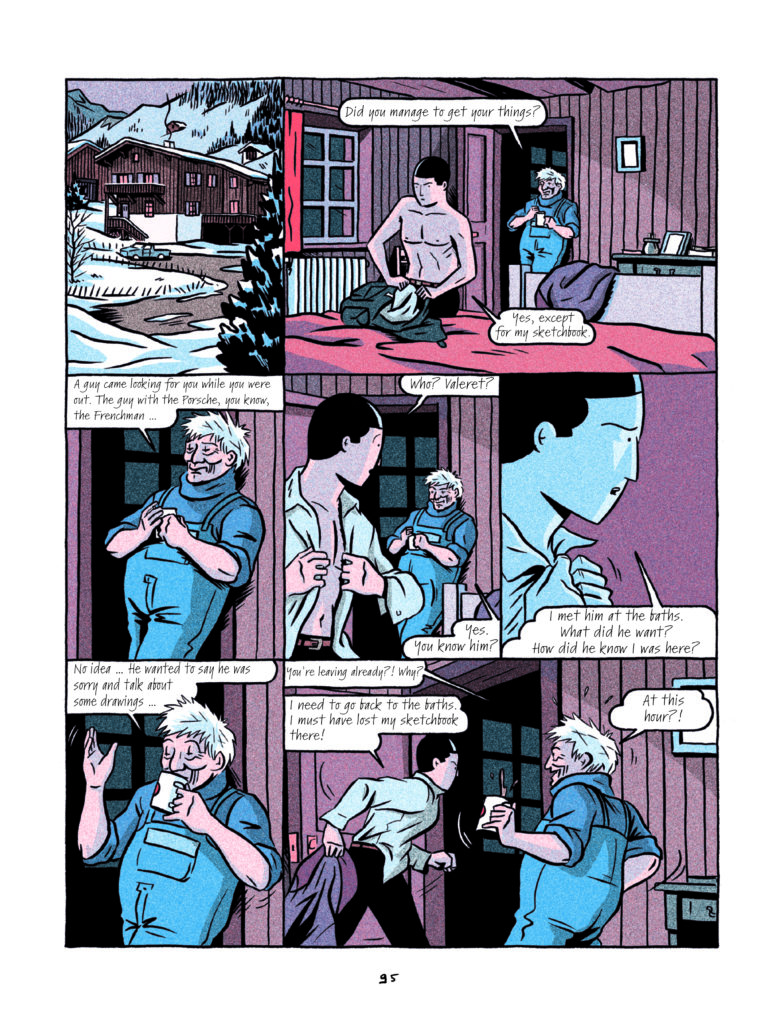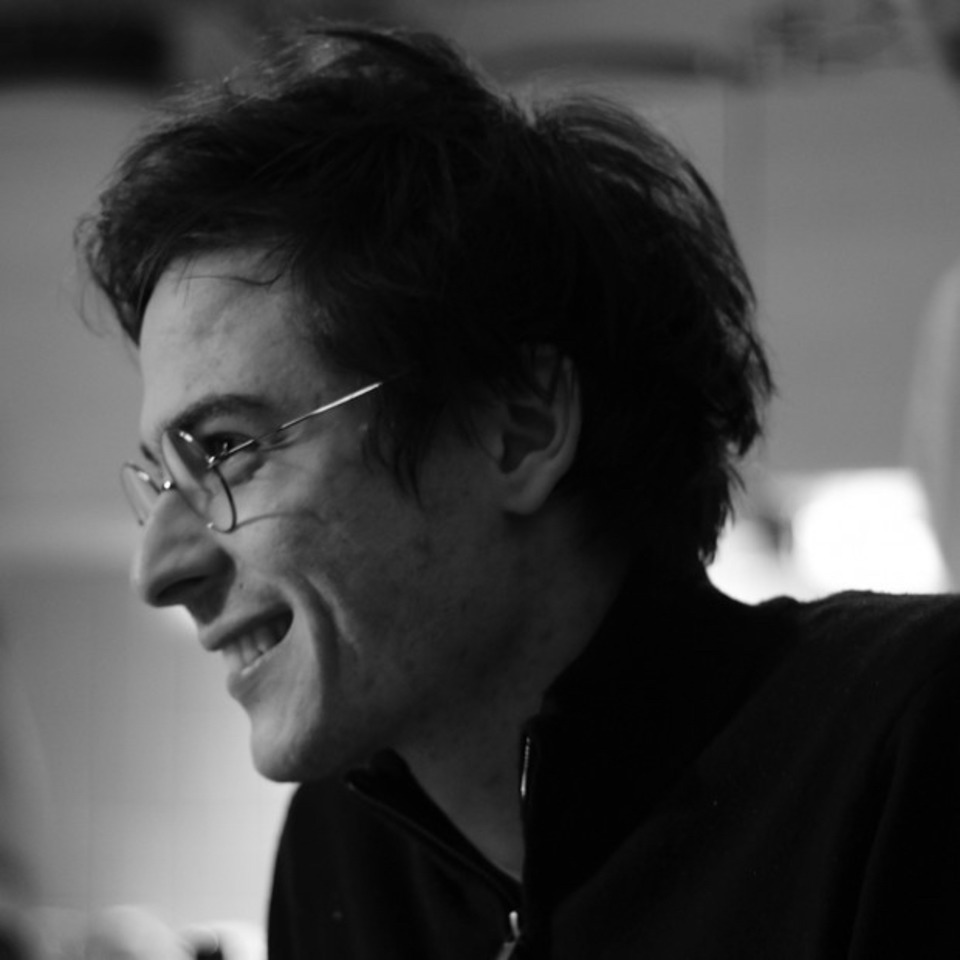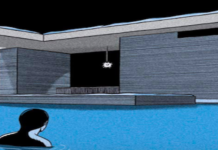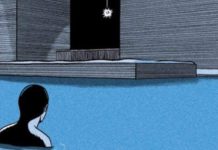The marketing for Swimming in Darkness immediately perked my interest with its inclusion of quotes from some of comics’ best storytellers. Warren Ellis described it as a noir with “mysterious architectures, strange geometries and people drowning in obsession is eerily unsettling and completely mesmerizing.” Elsa Charretier explained how cartoonist Lucas Harari uses a “puzzle-like grid will pull you in and swallow you whole.”
Such glowing praise immediately made the book worth a read, and it lived up to the lofty expectations it set. I was pleased to learn the book’s author was interested in discussing the graphic novel with The Beat. Read my interview with Lucas Harari below.
What interested you in the legend of a mountain that opens up?
I invented the legend. I had two reasons: First, I wanted to bring in the fantastic in a realistic way. Involving a local belief makes it possible to have a first time lag in the story. The fantastic takes shape in something real and not only in the character’s mind. And then, legend allows me to introduce an immemorial dimension to the heart of an architecture that bears all the markers of modernity.
What do you find appealing about the architectural design of bathhouses?
I have a taste for modern architecture but not specifically for bathhouses. My parents are architects and I grew up with it. In the summer we used to visit buildings.
What interested you in telling a story that intermixes the legend with a bathhouse?
It’s something that interests me, the idea that contemporary culture is a doorway to a buried yesterday made of beliefs, fears, mysteries, hidden truths… It’s a bit like the Mona Lisa scan reveals some impenetrable mysteries…
Have you had the opportunity to visit the location of the story yourself? If so, what did you learn from the trip?
When I was 13, I discovered the thermal baths of Vals, and it strongly marked my imagination… I think this is the very heart of what defines the architecture that seemed extraordinary to me in this place. The ordering of the different materials, the play of light, the volumes, the sounds, the colours, the context, the landscape… It seemed to me that everything in this place had a highly romantic character, like a container of fiction. What interests me is questioning the relationships that characters can have with places and how these relationships can motivate stories. However, in this dialectic, architecture is a very rich narrative spring, because a building offers its own definitions of space, time, and light and bounces off the potential of infinite fiction.
The character expressions are beautiful in their simplicity, especially those of the protagonist. What appeals to you about a minimalist art style for facial features?
I grew up with comics like Tintin from the “ligne claire” school, which uses a very simple style for faces: two points for the eyes, two waves for eyebrow, a curved line for the nose, a line for the mouth. From there, just move an eyebrow a little, or lift the mouth and you can make an expression. It’s very subtle, but that’s enough. When the drawing is too realistic, there is a risk that the reader loses empathy. In a minimal face, everyone can project their own emotions, identity with it themselves. And then, the characters must have the same head from one square to the other, so the case must be limited.
The texture of the colors is really interesting. Why did you choose that over a flatter color palette?
At first, it was a technical constraint. I started working on Swimming in Darkness at school for my degree. I wanted to self-published and I did it on a Riso printer we had at our disposal. It is a rather special printer that works with pure ink, crossroads of screen printing and offset. The colors are printed layer by layer. And to give the half-tones, the machine creates a grid with very small dots. I really like this effect because it breaks the too smooth and perfect side of the flat colors. It brings back a vibration. And then it worked very well with my subject, the cold, the minerals, the water, the snow…
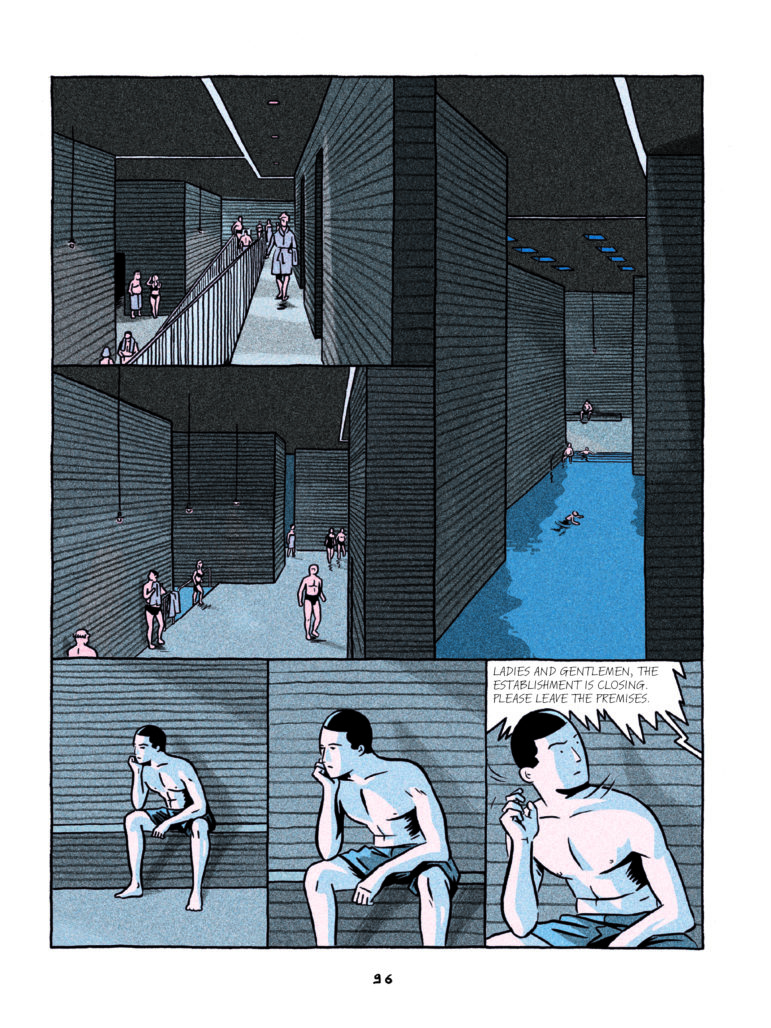
What did you learn about yourself and your craft from making Swimming in Darkness?
I discovered that I could interest and touch people with my stories. It is a great opportunity to be read around the world. I am very grateful to my publishers for allowing me to do this!
Follow Lucas Harari on Instagram @lucas.harari. Swimming in Darkness is available now on Amazon and other booksellers.
Matt Chats is an interview series featuring discussions with a creator or player in comics, diving deep into industry, process, and creative topics. Find its author, Matt O’Keefe, on Twitter and Tumblr. Email him with questions, comments, complaints, or whatever else is on your mind at [email protected].



